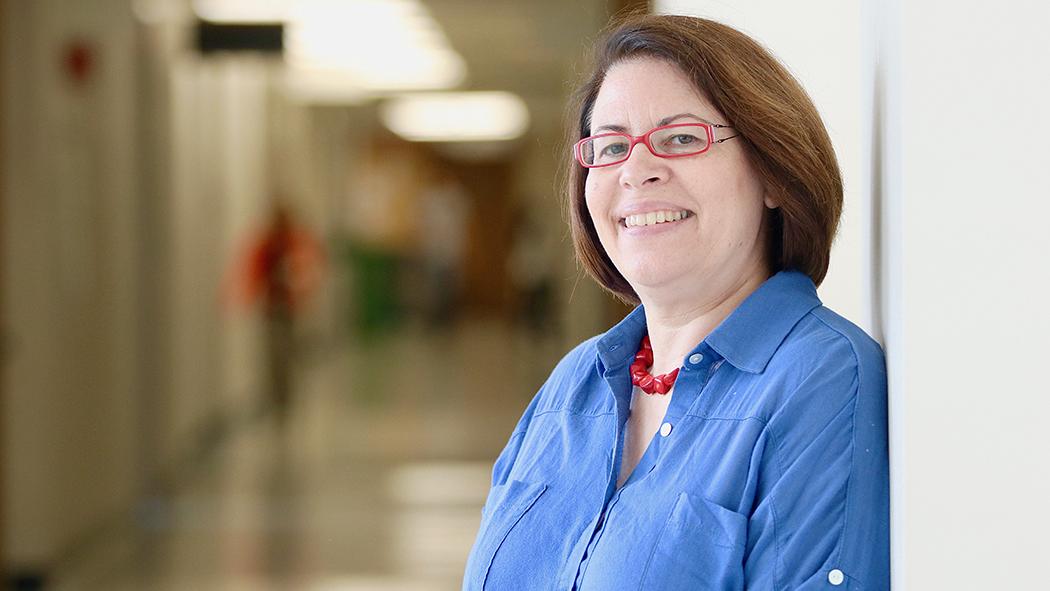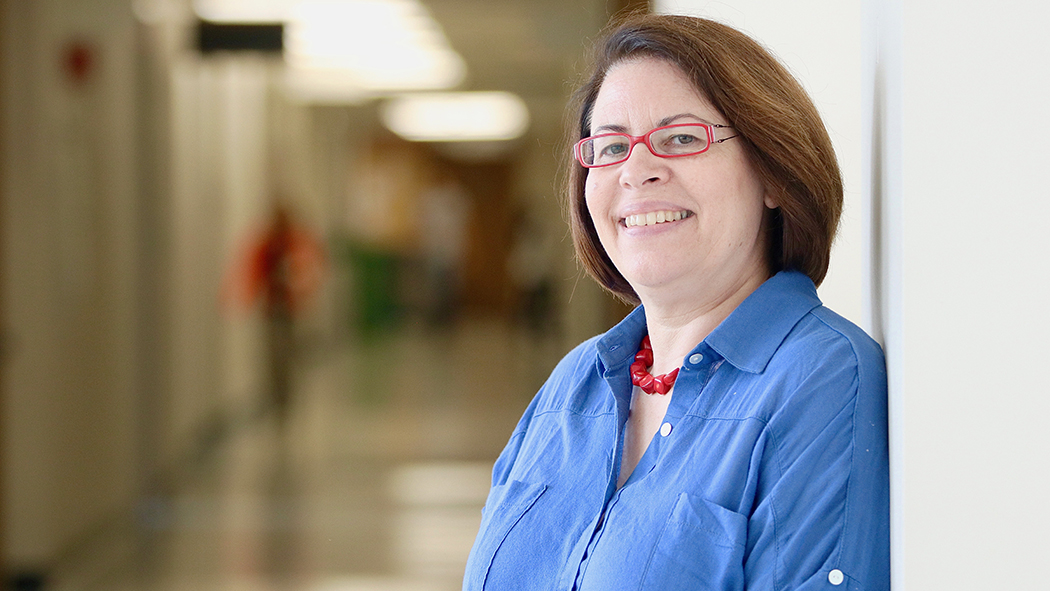
Image: Dr. Ruth Lanius
Photo credit: Paul Mayne, Communications & Public Affairs, Western University.
June 27, 2023
For those with post-traumatic stress disorder (PTSD), when faced with a trigger or reminder of trauma, can lose touch with the present moment and feel like they have been transported back to the scene of the trauma and experience emotions such as terror, horror, shame, anger, and/or betrayal. These feelings are often coupled with intense physiological hyper and/or hypoactivity – either emotionally aroused to a high degree or emotionally shut down.
“Some individuals with PTSD state they feel so emotionally numb that they don’t feel any emotions, they don’t feel like they’re alive,” says Dr. Ruth Lanius, Psychiatrist, London Health Sciences Centre (LHSC), Scientist, Lawson Health Research Institute, Professor of Psychiatry and Harris Woodman Endowed Chair in Psyche and Soma at Western University, who leads the clinical research unit for PTSD at University Hospital, LHSC. “Trauma can shift how we see ourselves in the world.”
Misconception about PTSD: It only results in relationship to military trauma.
Truth about PTSD: The prevalence of PTSD diagnoses is not just for those who have spent time in the military.
About 8 out of every 10 people will experience PTSD at some point in their lives.
“First responders also have a high prevalence of PTSD. However, it is childhood abuse that is also highly associated with developing PTSD,” explains Dr. Lanius.
Dr. Lanius notes that since the brain is still forming in childhood, any damage to the brain through abuse and neglect is associated with a high prevalence of PTSD. Often, childhood trauma is a risk factor for later development of PTSD. This means, that a person who experienced childhood trauma may be able to function well in their adult life with no symptoms related to the trauma; however, if they experience a traumatic incident later in life, the childhood trauma experienced increases the chance of developing PTSD.
Misconception about PTSD: It’s all in a person’s mind.
Truth about PTSD: With neuroimaging, PTSD has become a visible injury – trauma can physically alter the brain.
“While PTSD has been seen as an invisible injury, it is now a visible injury, which we can see when we image the brain,” says Dr. Lanius. “The brain adapts to traumatic experiences. But with treatment, we can change, restore and adapt the brain function to better resemble a healthy brain.”
Treatments are tailored to the person suffering from PTSD to address their recovery needs. Some possible treatment options include: cognitive behavioural interventions, cognitive processing therapy, Eye Movement Desensitization and Reprocessing (EMDR), neuro feedback, deep brain reorienting, and sensory-motor based approaches.
Misconception about PTSD: It is maladaptive and not a normal response to trauma.
Truth about PTSD: “Those with PTSD are experiencing a normal adaptation to the experience of abnormal events,” explains Dr. Lanius. “The development of PTSD is not abnormal; it is your brain adapting to an injury from trauma.”
PTSD can lead to incredible suffering for the individual. It can change how a person sees themselves, how a person sees the world. The world can seem more dangerous after experiencing hurt, and individuals may try to avoid things that remind them of the trauma or try to avoid feelings related to the trauma.
There are a multitude of mental and physical symptoms associated with PTSD. When a person feels the trauma occurring again, they often relive the symptoms:
- Heart races or slows down
- Intense emotional reaction (horror, terror, shame, betrayal, anger), or emotional numbness
- Muscles tense
- Vomiting or diarrhea
- Unable to sleep or concentrate
- Irritable, angry, or on guard
- Startle easily
- Increased risk of suicide.
“There is also a dissociative subtype of PTSD, where the person copes with the trauma by detaching from themselves. They disconnect from their body so the trauma feels as if it’s happening to someone else. For example, a person with this subtype would not usually have an increased heart rate, their heart rate would decrease under increased stress levels,” says Dr. Lanius.
Hope for those with PTSD
Even though it is a distressing illness, it is an injury that people can heal from.
“While it is not an easy course of recovery, it is definitely possible to heal from PTSD,” Dr. Lanius expresses. “There is a lot of ongoing research. In my own research, in the clinic I lead at University Hospital, we look at how trauma effects the brain, mind and body, and how adaptations in the brain, mind and body can guide treatments for trauma.”
There are a number of novel treatments for PTSD being studied at LHSC through Lawson Health Research Institute. If you are interested in learning more, please email Suzy Southwell at Suzy.Southwell@lhsc.on.ca.
Mental health care at LHSC
LHSC’s Adult Mental Health Inpatient/Outpatient Services are a part of the continuum of services available across the system that supports people with trauma in their recovery. All of the adult mental health services at LHSC take a trauma informed approach to care recognizing that a high percentage of patients with mental health and addictions have experienced one or multiple traumatic events. LHSC’s adult mental health services treat patients from a healing and recovery-oriented approach that provides care in a way that is accessible and appropriate for those who may have experienced trauma.
Please note that this article is not medical advice and if you have concerns about your mental health, please connect with your primary care provider.
If you or someone you know is in crisis and needs immediate support, please call 911 or go to your nearest emergency department.
Photo credit: Paul Mayne, Communications & Public Affairs, Western University.
